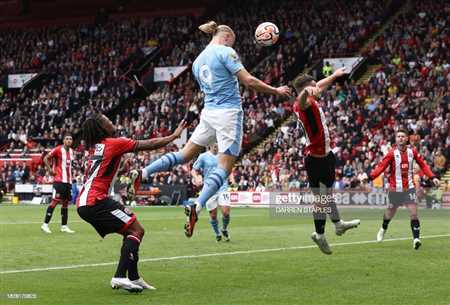

In the realm of professional football, certain seasons can become a test of resilience and adaptability for teams. As clubs navigate the intense pressures of competition, they are often faced with various hurdles that can hinder their performance on the field. The current scenario highlights a particular side experiencing a turbulent journey, with a striking number of setbacks impacting their overall standing.
Over the course of this campaign, the team has faced an alarming trend that places them at a significant disadvantage. Despite their efforts, the defensive line has struggled to maintain stability, leading to a concerning tally that raises questions about the effectiveness of their strategies. As supporters look on with a mix of hope and frustration, the narrative of this season unfolds with each passing game.
While external elements, including financial incentives from local establishments, have flooded the atmosphere, the focus remains steadfastly on the pitch. This juxtaposition of sporting challenges against the backdrop of alluring offers serves to amplify the complexities faced by the squad. Fans are left to ponder the implications of these circumstances on their beloved team as they strive to find their footing in a fiercely competitive environment.
In the world of football, a solid defense is often the backbone of a successful team. However, a certain club has faced considerable challenges in maintaining a robust backline, leading to an alarming pattern of conceding numerous opportunities to opponents. This analysis delves into the intricacies of the defensive issues affecting performance on the pitch.
The current season has highlighted several critical factors contributing to the defensive vulnerabilities. These factors can be categorized as follows:
Addressing these challenges requires a multifaceted approach. The coaching staff will need to emphasize the following key areas:
By tackling these underlying issues, there is potential for the squad to fortify its defense and halt the current trend. Strengthening the rear guard may provide the foundation needed for a turnaround in overall fortunes.
The performance of certain teams this season has left fans in disbelief, particularly when it comes to their defensive capabilities. A staggering number of times the ball has found the back of their net highlights a significant issue that requires immediate attention. The alarming statistics not only reflect on the team’s form but also raise questions about the strategies employed by the coaching staff.
With a total that shatters previous records, the implications are felt far beyond the pitch. Such a lack of resilience raises concerns about the overall mindset and readiness of the players. Pressure builds among supporters who expect a competitive display, and this trend could potentially affect attendance and financial viability.
This unprecedented situation calls for a critical analysis of techniques and tactics that are currently in play. It’s essential for management to reassess their approach to both training and in-game decision-making if they wish to turn around the fortunes of the team. The continued trend of conceding will likely impact team morale, making it crucial to address these vulnerabilities as soon as possible.
Examining the current performance against historical benchmarks reveals significant insights into the challenges faced by teams over time. In this section, we will explore how recent outcomes align or diverge from past statistics, highlighting patterns, trends, and notable anomalies.
Historically, certain clubs have struggled with their defensive strategies, leading to high concession rates. A comparative analysis of past seasons may reveal whether current trends are anomalies or part of a larger cycle.
Several elements can influence a team’s performance, from managerial changes to financial pressures. By assessing previous seasons under similar circumstances, we can discern the effects of these variables on outcomes.
Analyzing league-wide statistics over the years can provide context for current performance levels. This includes understanding how the overall competitiveness of the league has shifted and how that correlates with individual team results.
The role of individual players in historical contexts can shed light on current challenges. Comparing current squad dynamics with those from past successful periods offers clarity on whether the issues lie in teamwork or individual performance.
Through this comparative analysis, we will uncover the underlying factors that contribute to current performance, providing a comprehensive understanding of how history shapes present-day challenges.
The recent shortcomings in team performance have raised questions about the underlying reasons for persistent defensive breakdowns. Multiple elements contribute to an inability to maintain a strong defensive line, leading to frequent setbacks on the field. A comprehensive evaluation of these factors reveals potential weaknesses in both strategy and execution.
One significant aspect is the lack of cohesion among defenders. Effective communication and teamwork are crucial in ensuring that players can anticipate each other’s movements and respond adequately to opposing threats. When these elements are missing, it becomes increasingly difficult to close down spaces and track runners.
In addition, physical fitness levels play a vital role in a team’s defensive capabilities. Players who struggle with conditioning may find themselves unable to keep pace with fast, agile opponents, resulting in lapses that can be exploited. Injuries also contribute to instability, as the rotation of personnel can disrupt established defensive partnerships.
Tactical decisions made by the coaching staff can further exacerbate these vulnerabilities. An overly ambitious attacking strategy might leave the backline exposed to counter-attacks, placing additional pressure on defenders. Moreover, an inflexible approach in adjusting tactics based on the opponent can lead to recurring issues in the defensive setup.
Lastly, psychological factors such as low morale and lack of confidence can deeply affect individual and collective performances. When players are under strain, their decision-making abilities often diminish, leading to elementary errors that can be capitalized upon by rivals. Understanding and addressing these complex causes is essential for the improvement of defensive play.

The current situation surrounding the team has led to a noticeable shift in the feelings and attitudes of supporters. As performances have dipped, the joy and excitement once associated with following the club have transformed into frustration and disappointment. Fans, who are typically the backbone of any sports organization, are beginning to voice their concerns, reflecting how on-field issues can influence off-field passion.
A decline in results not only affects attendance at games but also alters the culture surrounding the club. Loyal backers may find themselves questioning their allegiance, leading to divided opinions and discussions within the community. Social media platforms have become hotbeds for these sentiments, with various platforms buzzing with discussions about the future and direction of the team.
The emotional investment fans place in their favorite teams often translates to their overall experience. As negativity grows, it’s imperative for the club to engage with its supporters, addressing concerns while instilling a sense of hope for better days ahead. Such interactions can help mend the rift created by poor performance, reminding the enthusiasts that their loyalty is cherished regardless of the ups and downs.
In the face of overwhelming challenges, supporters often find themselves torn between unwavering commitment and frustration. The dedication shown by fans is remarkable, yet it is frequently tested by a series of disappointing events on the field. This section delves into how loyalty manifests among enthusiasts and the emotional responses that accompany the team’s performance.
The community responds in numerous ways, illustrating the strength of their allegiance:
Nonetheless, frustration can sometimes boil over:
Ultimately, the bond between supporters and the team is complex, intertwining passion, disappointment, and the enduring hope for future success. This relationship serves as a testament to the depth of loyalty that fans possess, regardless of current circumstances.
The interaction between external incentives and team spirit can significantly impact performance on the field. When players are faced with the distractions offered by various promotional activities, their focus and dedication may waver. This phenomenon is particularly noticeable in the world of sports, where the allure of financial gains can detract from the unity and concentration that a cohesive team requires.
Engagement in promotional activities can create a sense of excitement among players, but it can also lead to an imbalance in priorities. While the intention behind such incentives is often to boost motivation and provide additional support, the potential for overindulgence exists. As athletes become more involved in these schemes, the boundary between their professional commitments and personal interests may blur, potentially hindering their collective performance.
Moreover, the psychological effects of these marketing strategies can influence team dynamics. When certain individuals appear more invested in external rewards than in the team’s success, it can create an atmosphere of distrust or competition within the squad. Maintaining a healthy balance between the lure of incentives and a strong team ethos is essential for fostering an environment conducive to success.